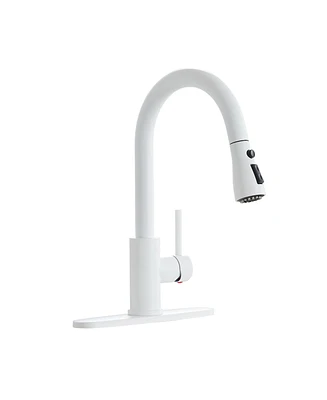Home
Practical Cold Spray
Loading Inventory...
Barnes and Noble
Practical Cold Spray
Current price: $249.99


Barnes and Noble
Practical Cold Spray
Current price: $249.99
Loading Inventory...
Size: Hardcover
*Product Information may vary - to confirm product availability, pricing, and additional information please contact Barnes and Noble
This book provides a detailed explanation of the cold spray process from a practical standpoint. Drawing on the authors’ 36 years of research and development experience, it is firmly rooted in theory but also substantiated by empirical data and practical knowledge, offering potential users the information they need to recognize the advantages, as well as the limitations, of cold spray. This sets it apart from previous works on the subject, which have been purely academic. Cold spray technology has made great dramatic strides over the last 10 years and is now being used extensively in the aerospace, electronics, automotive, medical, and even the petrochemical industries. Most recently, cold spray of near-net shaped parts was accomplished – something previously assumed to be impossible because of the limitations of commercially available cold spray systems and a lack of fundamental understanding regarding the process. The cost of cold spray has also declined, making it appealingto industry through the introduction of new powders, surface preparation techniques, and recovery systems tailored to the cold spray process.
Though primarily intended for users of the technology, this handbook is also a valuable resource for researchers interested in advances in cold spray materials, improved feedsk powders, advanced hardware and software development, surface preparation techniques, and the numerous applications developed to date. For example, cold spray aluminum alloys have been developed that offer the strength and ductility of wrought material in the as-sprayed condition. This has yet to be achieved by conventional powder consolidation methods including laser sintering, electron beam, and ultrasonic techniques. Other topics covered include additive manufacturing, structural repair, nondestructive evaluation, advanced cold spray materials, qualification requirements, cold spray systems comparison, and, finally, helium recovery. Thanks to its practical focus, the book provides readers with everything they need to understand, evaluate, and implement cold spray technology.
Though primarily intended for users of the technology, this handbook is also a valuable resource for researchers interested in advances in cold spray materials, improved feedsk powders, advanced hardware and software development, surface preparation techniques, and the numerous applications developed to date. For example, cold spray aluminum alloys have been developed that offer the strength and ductility of wrought material in the as-sprayed condition. This has yet to be achieved by conventional powder consolidation methods including laser sintering, electron beam, and ultrasonic techniques. Other topics covered include additive manufacturing, structural repair, nondestructive evaluation, advanced cold spray materials, qualification requirements, cold spray systems comparison, and, finally, helium recovery. Thanks to its practical focus, the book provides readers with everything they need to understand, evaluate, and implement cold spray technology.


















